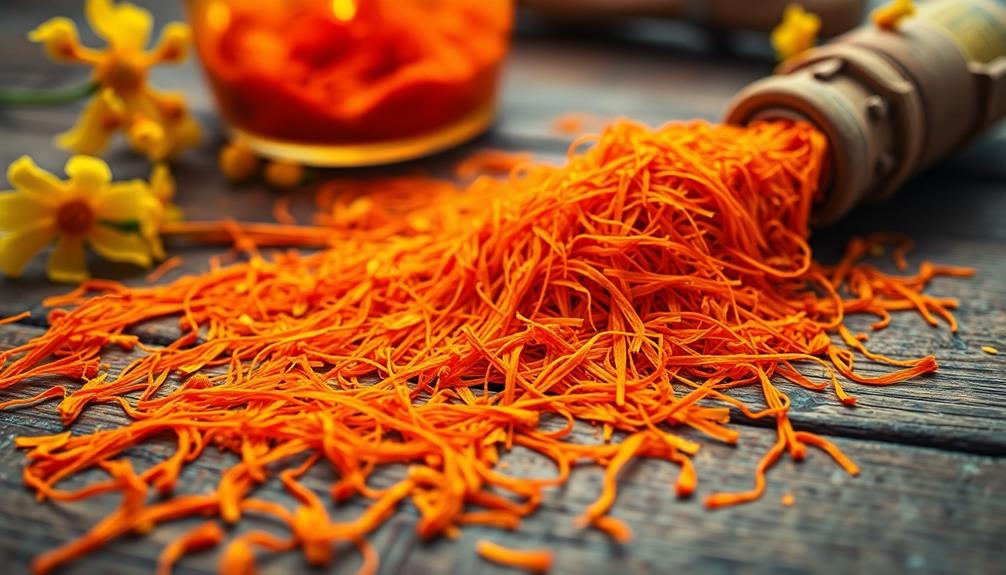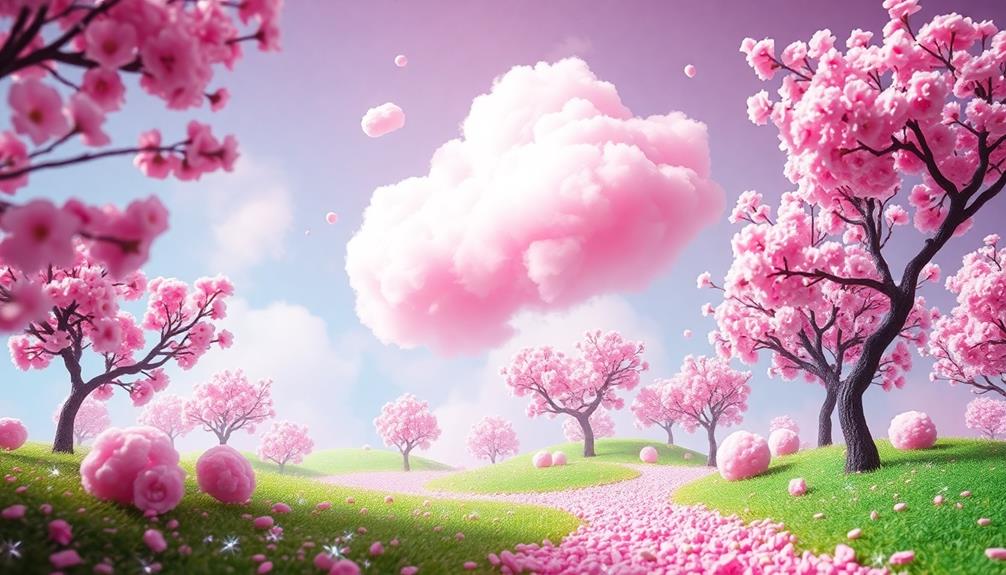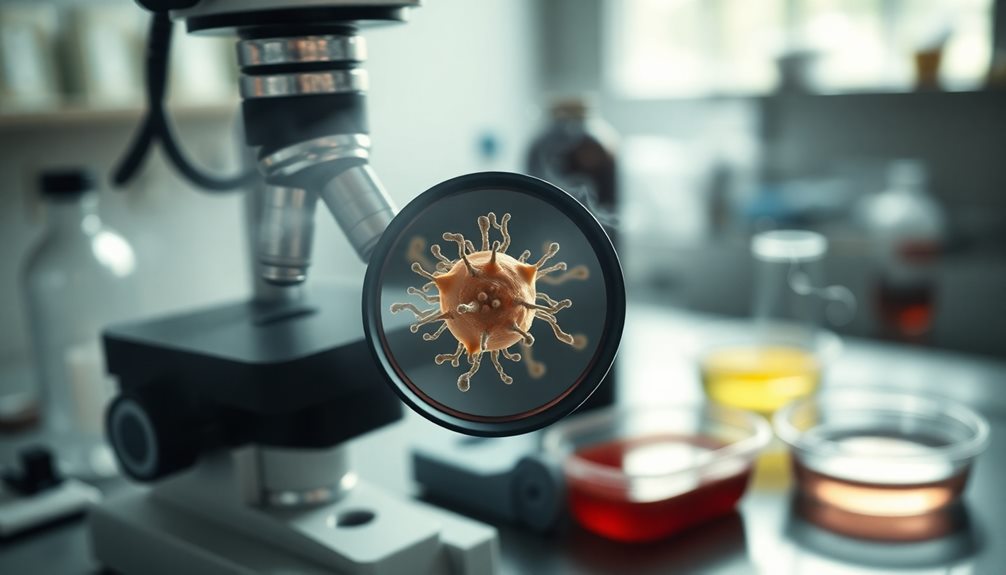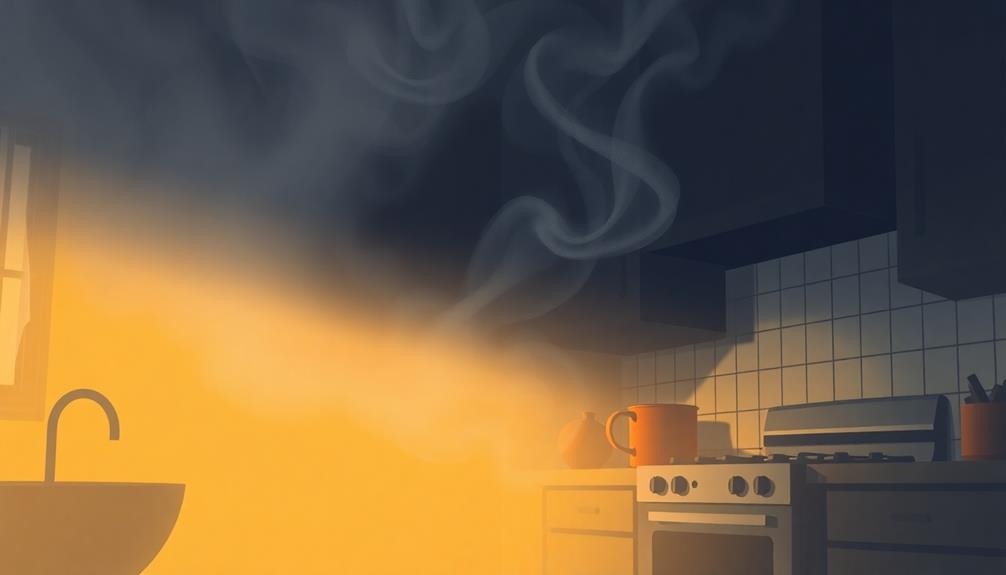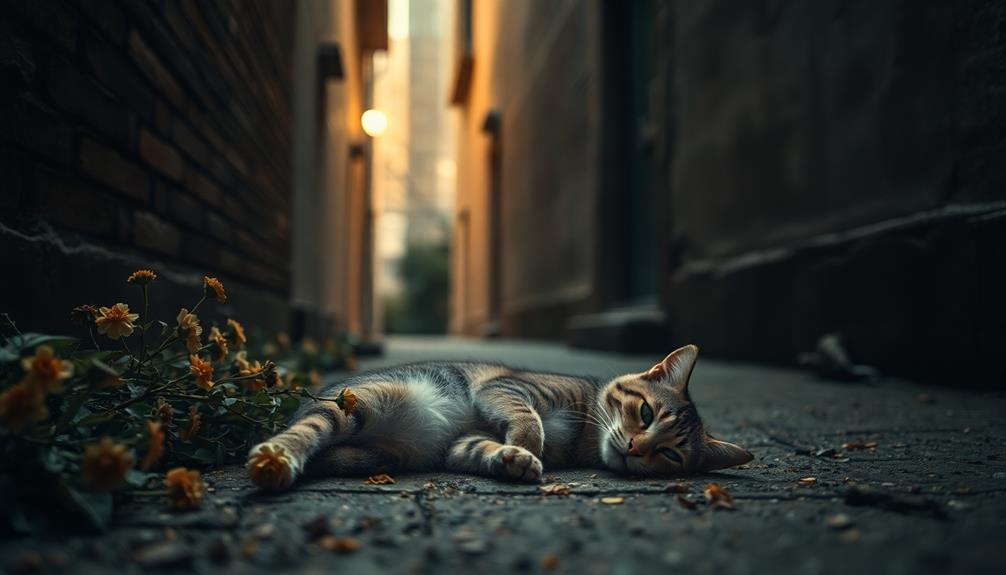Saffron smells amazing! Its aroma mixes warm, earthy notes with a touch of sweetness, creating an inviting scent that makes your dishes feel special. You might notice hints of floral fragrance and a subtle metallic quality that adds to its charm. This unique smell pairs perfectly with various foods, from savory paellas to sweet desserts. When used, it not only brightens the color of your dish but also brings back memories of family gatherings and celebrations. If you're curious about how to use saffron in your cooking, there's plenty more to uncover that'll help you become a saffron pro!
Key Takeaways
- Saffron has a complex and alluring scent that is warm and earthy, reminiscent of sun-soaked fields.
- The aroma features slightly sweet notes, making it feel comforting and inviting.
- Floral hints and a subtle metallic quality add to saffron's unique fragrance profile.
- The combination of these elements creates a refreshing and grounding scent experience.
- Overall, saffron's smell enhances the culinary experience, making it a prized spice in cooking.
Introduction
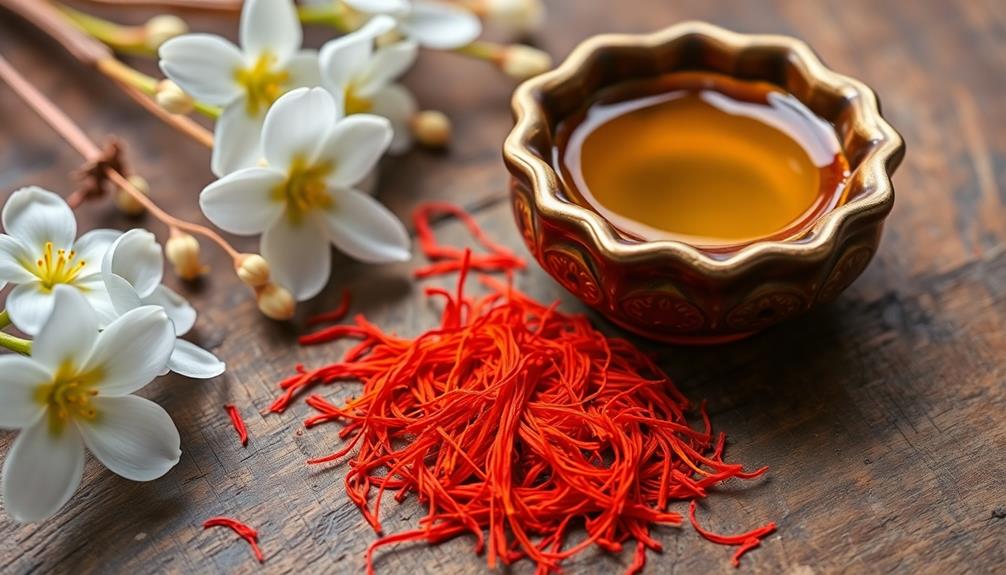
Saffron, often hailed as one of the most precious spices in the world, has a unique and intriguing aroma. You might've heard people rave about its magical flavor and vibrant color, but the scent is just as fascinating. When you first catch a whiff, you'll notice it's unlike anything you've experienced before.
It's a spice that can elevate dishes, making them feel gourmet, even if you're just cooking at home. As you explore the world of saffron, you'll find it's not just a pretty addition to your meals. It's often used in various cuisines, from savory rice dishes to sweet desserts, bringing a warm, earthy note that captivates your senses.
When you think of saffron, imagine golden threads that not only look beautiful but also promise a delightful culinary adventure. Whether you're a budding chef or just curious about cooking, saffron's aroma adds a layer of excitement to your kitchen.
Description of the Smell
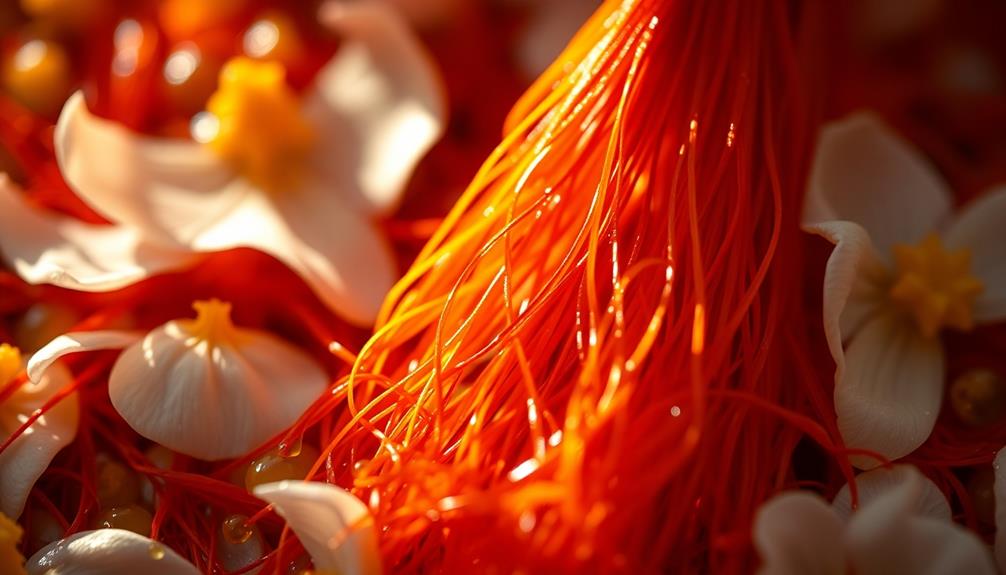
One whiff of saffron reveals a complex and alluring scent that's hard to pinpoint. You might first notice a warm, earthy aroma, almost like a sun-soaked field after rain. This scent is rich and slightly sweet, making it feel comforting and inviting. It's as if you've stepped into a cozy kitchen where someone is preparing a delicious meal.
As you take a deeper breath, you'll detect hints of floral notes, reminiscent of dried flowers or even a light breeze through a garden. There's also a subtle, slightly metallic quality that adds an intriguing twist to the overall fragrance. Some people might say it reminds them of hay or fresh straw, transporting them to a peaceful countryside.
The combined scents create a unique experience that's both refreshing and grounding, leaving you curious for more. When you cook with saffron, its smell can fill the room, sparking your appetite and making your mouth water.
It's a scent that invites you to explore new flavors and dishes. So, next time you catch a whiff of saffron, take a moment to enjoy its complexity and let it inspire your culinary adventures!
Source and Composition
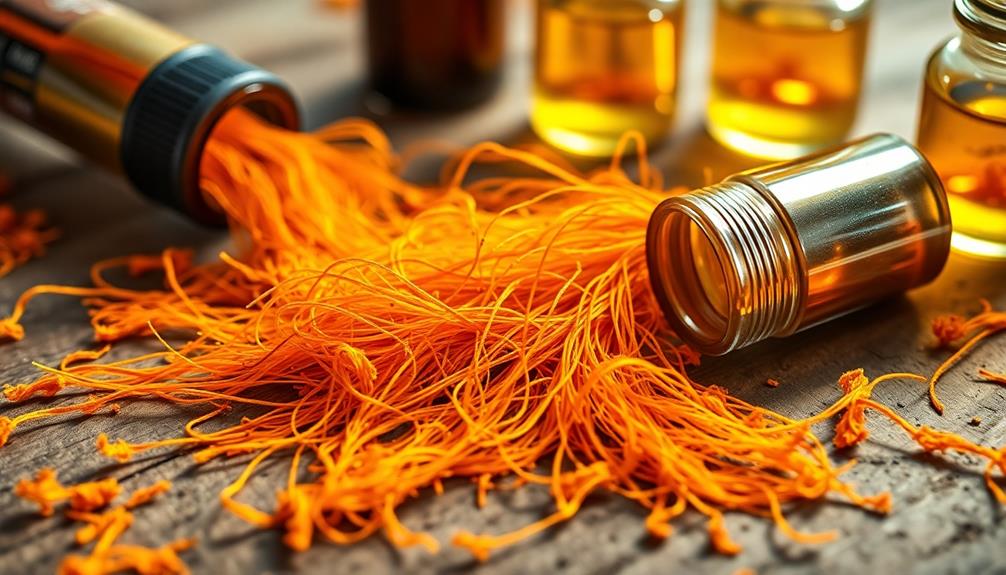
Derived from the delicate stigmas of the Crocus sativus flower, saffron is a spice with a rich history and unique source. You might be surprised to learn that it takes about 150,000 flowers to produce just one kilogram of saffron! This labor-intensive process explains why saffron is one of the most expensive spices in the world.
Each flower only produces three vivid red stigmas, which are carefully harvested by hand.
The composition of saffron is what gives it its distinct aroma and flavor. It contains compounds like safranal, which contributes to its sweet, earthy smell, and picrocrocin, which adds a slightly bitter taste.
When you cook with saffron, you're not just adding color; you're unlocking a world of complex flavors and scents.
Most saffron comes from countries like Iran, Spain, and India, where the climate is just right for growing the Crocus sativus.
Whether you're using it in a dish or just admiring it, understanding saffron's source and composition helps you appreciate this incredible spice even more.
Typical Scenarios or Environments
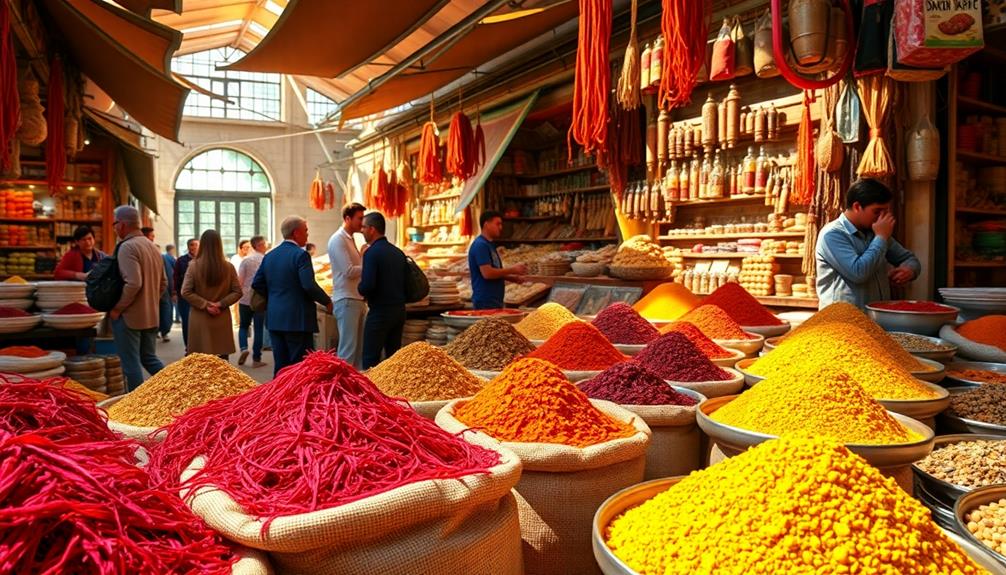
In the heart of a bustling kitchen, saffron often finds its way into dishes that celebrate rich flavors and vibrant colors. Picture yourself cooking a warm, fragrant paella on a weekend with friends or family. As you add saffron to the bubbling pot, its unique aroma fills the air, blending with the sounds of laughter and sizzling vegetables.
You might also encounter saffron in cozy Italian risottos, where it creates a beautiful golden hue and an inviting scent that makes your mouth water.
Imagine a sunny picnic, where someone surprises the group with saffron-infused lemonade. The unexpected twist makes everyone curious about the refreshing drink's flavor.
Saffron isn't just limited to savory dishes; it can brighten up desserts too! Think about a rich, creamy saffron ice cream served at a summer party. The delightful fragrance wafts through the air, tempting everyone to take a scoop.
Whether it's a festive gathering or a quiet dinner at home, saffron brings a touch of excitement and warmth to any meal. You'll find that its unique smell and flavor can turn an ordinary dish into something extraordinary, making your culinary adventures even more enjoyable.
Emotional or Cultural Associations

Cooking with saffron often evokes memories and emotions tied to shared experiences and cultural traditions. When you sprinkle that golden spice into your dish, it might remind you of family gatherings or celebrations.
Maybe you recall your grandmother's kitchen, filled with laughter and the rich aroma of saffron-infused rice. Those moments create a warm connection, pulling you back to times when food was more than just a meal; it was a way to bond.
Saffron also carries significance in various cultures. In some places, it's a symbol of prosperity and happiness, often used in special dishes for weddings or festivals.
When you use saffron, you're not just adding flavor; you're participating in a cultural ritual that's been passed down for generations. It's like adding a dash of history to your plate!
Health or Safety Considerations
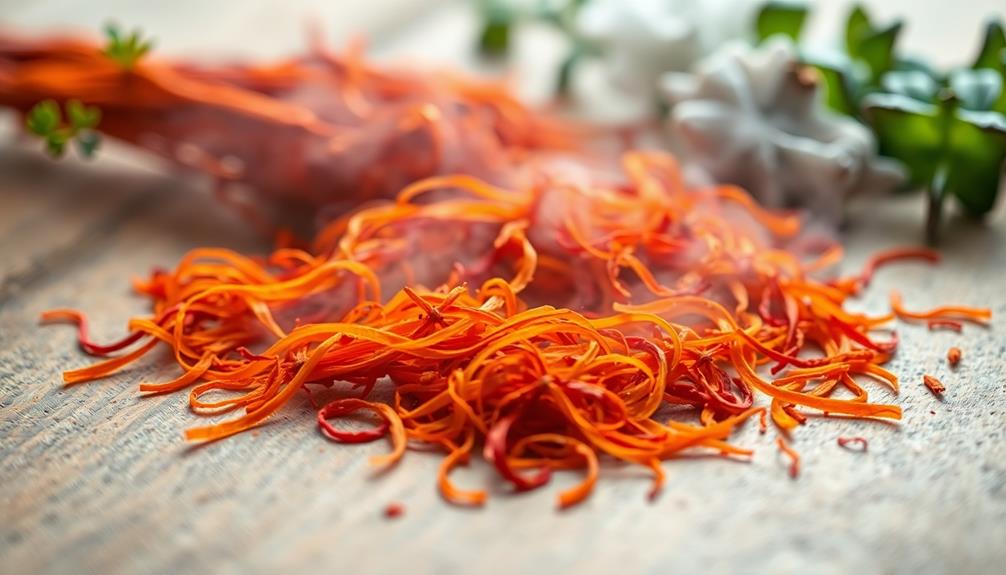
When using saffron, it's important to be aware of a few health and safety considerations. First off, saffron is generally safe for most people when used in normal culinary amounts. However, if you decide to go heavy on the saffron, be cautious! Large doses can cause side effects like nausea or even more serious health issues. It's always best to use saffron in moderation.
If you're pregnant or nursing, you might want to steer clear of excessive saffron. Some studies suggest that high doses could lead to complications, so it's wise to consult with a healthcare professional before adding it to your diet.
Also, keep an eye out for allergies. While rare, some people can have allergic reactions to saffron, so it's a good idea to test a small amount first.
Lastly, make sure you're buying saffron from a reputable source. There are many fakes out there that can be mixed with other substances. Always check for quality, because your health is worth it!
Final Thoughts
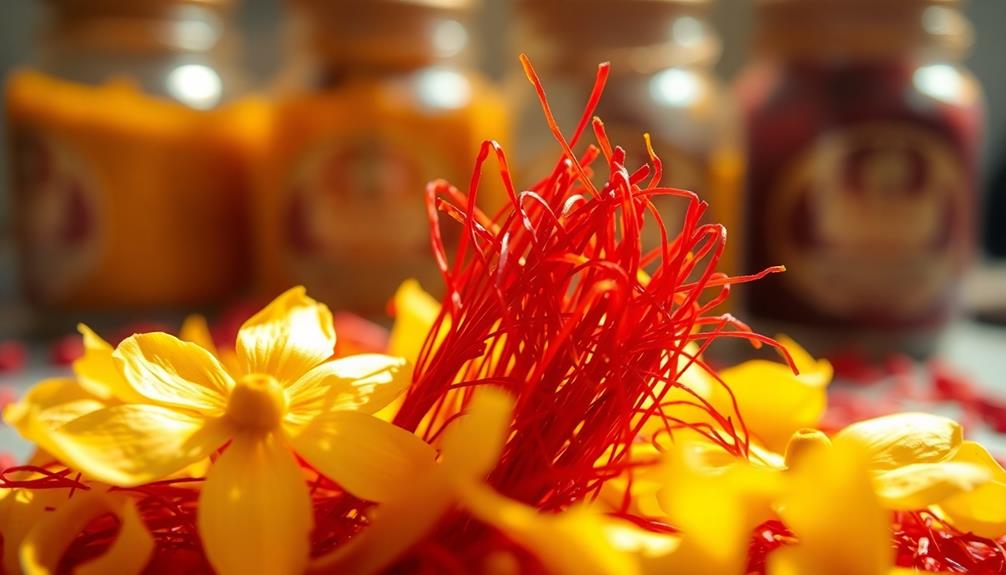
Saffron's unique aroma and flavor can elevate any dish, making it a prized ingredient in kitchens around the world. If you've ever experienced saffron, you know it brings a warm, earthy scent that's hard to forget.
It's like a little taste of sunshine, brightening up your meals with its golden color and rich flavor. Whether you're adding it to rice, soups, or desserts, saffron can turn an ordinary dish into something special.
Additionally, saffron is often paired with herbal teas to enhance their flavor and benefits; for instance, combining it with herbal teas may aid in digestion can create a soothing and aromatic experience.
When using saffron, remember that a little goes a long way. Just a few threads can infuse your dish with incredible flavor and aroma. You might be wondering how to store it. Keep it in a cool, dark place, away from moisture, to maintain its potency.
If you haven't tried saffron yet, you're in for a treat! It's worth exploring, and it can inspire your creativity in the kitchen.
So, go ahead, experiment with this wonderful spice and see how it can transform your meals. You'll not only impress your friends and family but also discover a new culinary adventure!
Happy cooking, and may your saffron experiences be flavorful and fun!
Frequently Asked Questions
Can Saffron Smell Different Based on Its Origin?
Yes, saffron can smell different based on its origin. Factors like climate, soil, and cultivation methods influence its aroma. You might notice variations in sweetness, earthiness, or floral notes depending on where it's sourced.
How Should Saffron Be Stored to Preserve Its Scent?
To preserve saffron's scent, store it in an airtight container, away from light and heat. Keep it in a cool, dark place, like a pantry, to maintain its flavor and aromatic qualities for longer.
Are There Any Artificial Saffron Scents Available?
Yes, you can find artificial saffron scents. Many companies create synthetic versions for candles, perfumes, and air fresheners. Just be sure to check the ingredient list to ensure it meets your preferences and quality standards.
Does Cooking Saffron Alter Its Aroma?
Yes, cooking saffron does alter its aroma. When heated, its rich, earthy scent intensifies, releasing sweeter, more complex notes. You'll notice a transformation that enhances the overall fragrance in your dish, creating an inviting atmosphere.
Can Saffron's Smell Trigger Allergies or Sensitivities?
Yes, saffron's smell can trigger allergies or sensitivities in some people. If you notice any unusual reactions like sneezing or headaches when exposed, it's best to avoid it and consult a healthcare professional.

